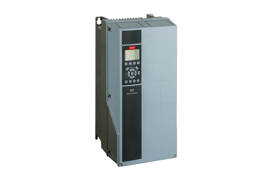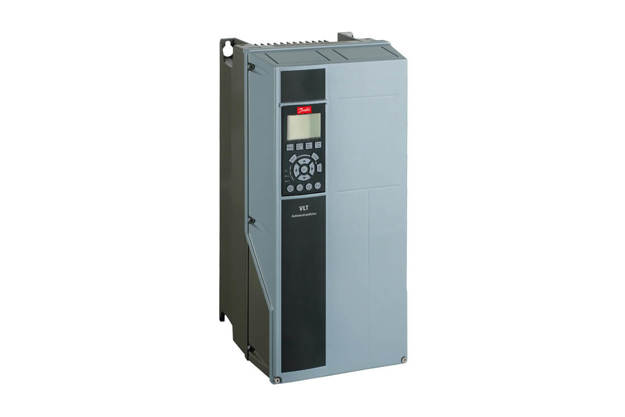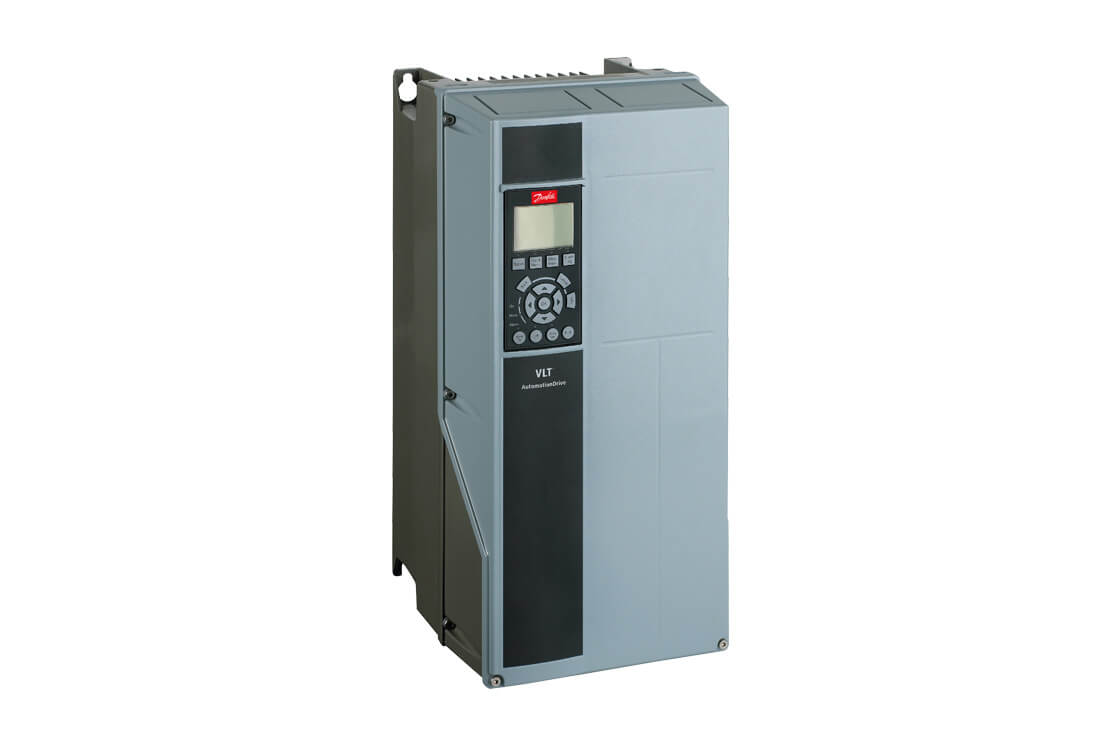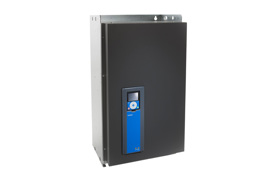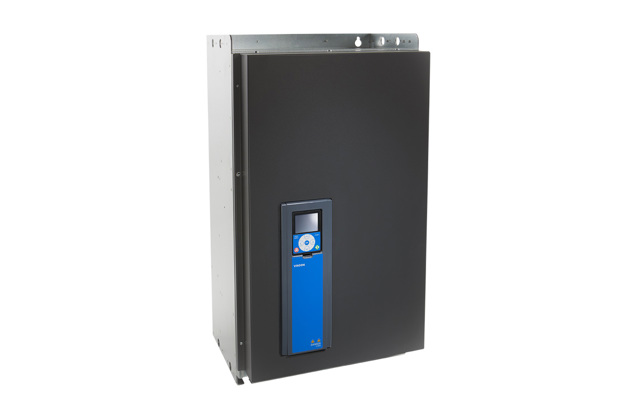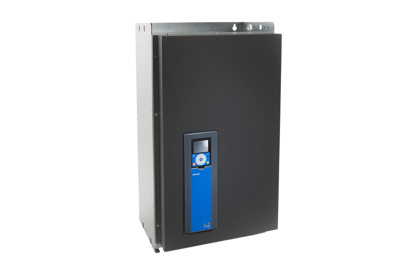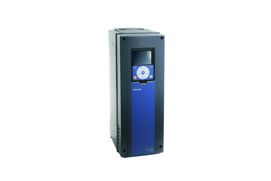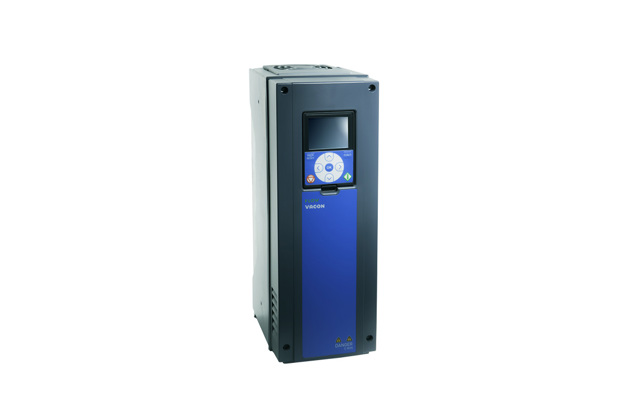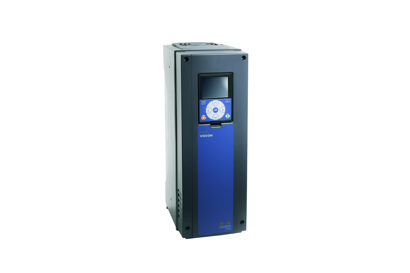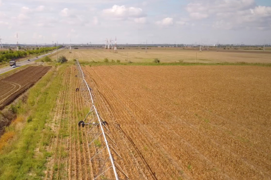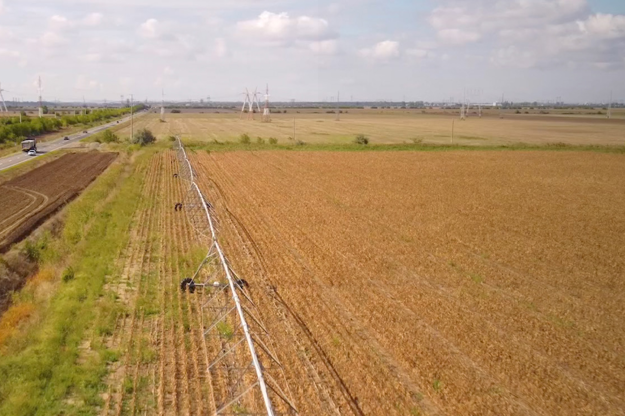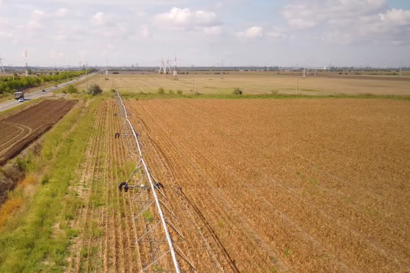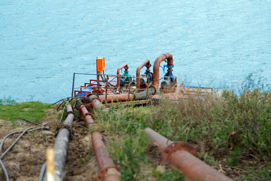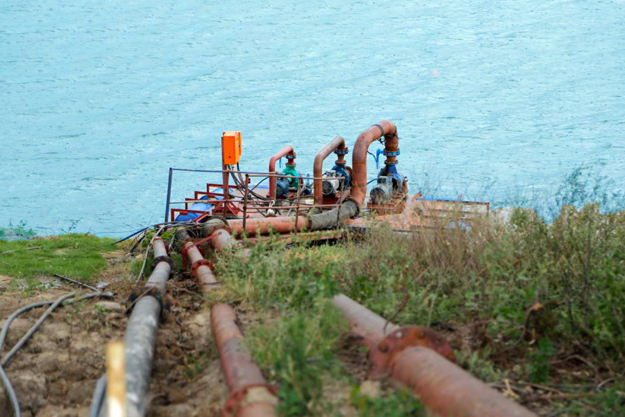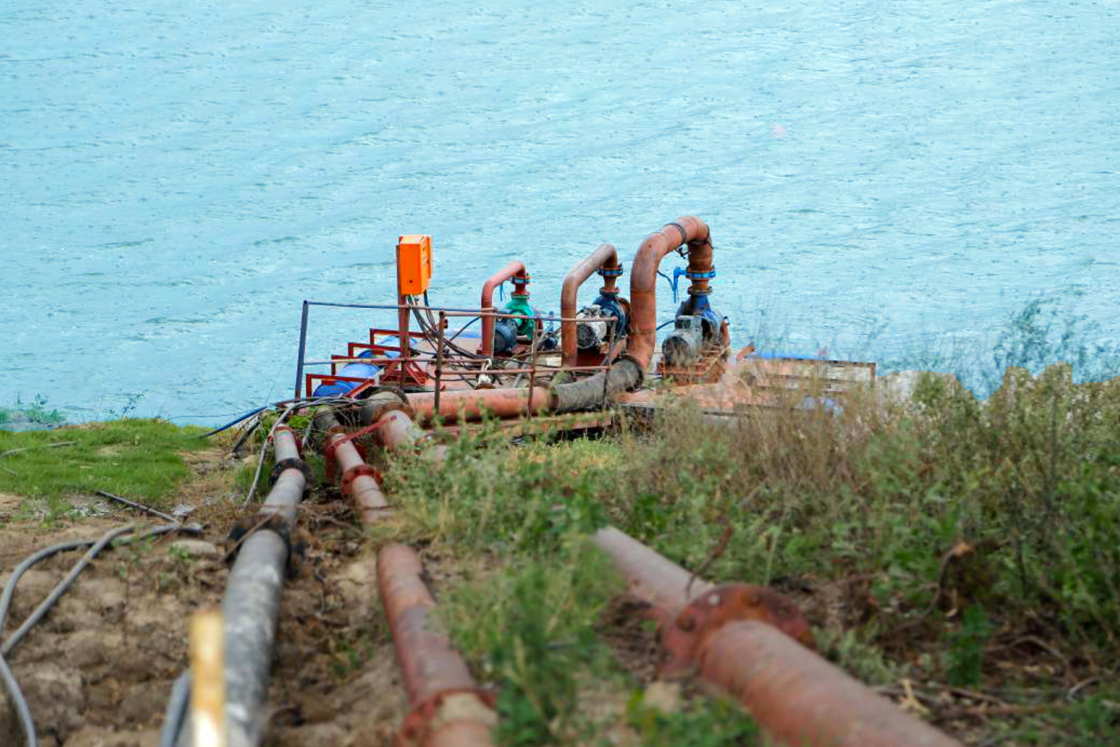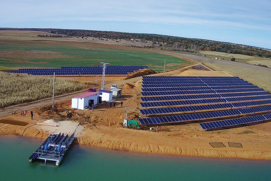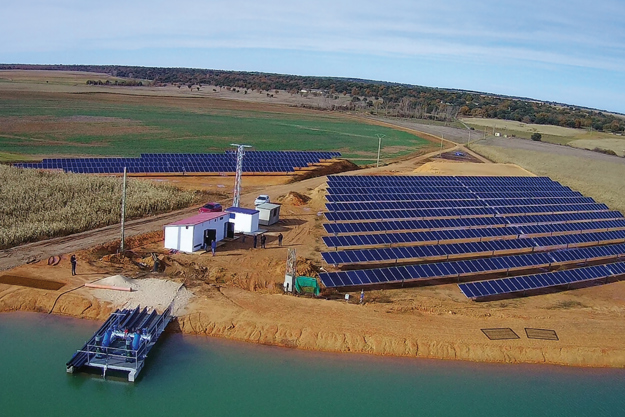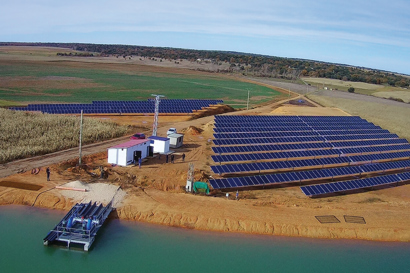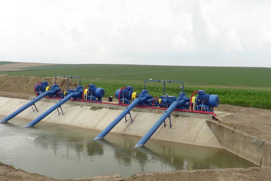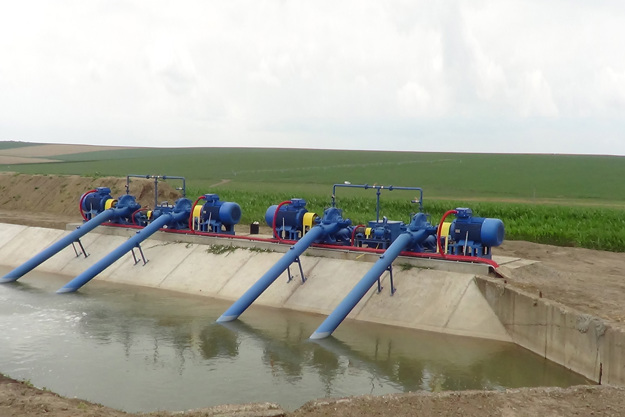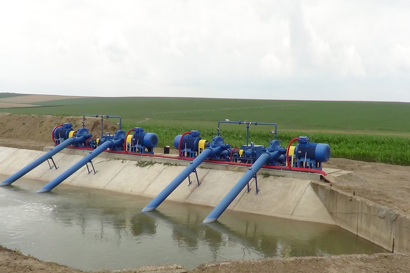SPAIN: A big electricity bill was the motivation for Sumsol, a Spanish irrigation company, to optimize its pumping operations. Sumsol irrigates sugar beet and cornfields covering 150 hectares, using six pumps. It achieved significant energy savings and emission reduction by converting these grid-powered pumps to solar power, optimized by VACON® 100 drives with a clever MPPT4 algorithm. The return on investment is estimated at 8 years.

How do solar-powered drives optimize farm irrigation?
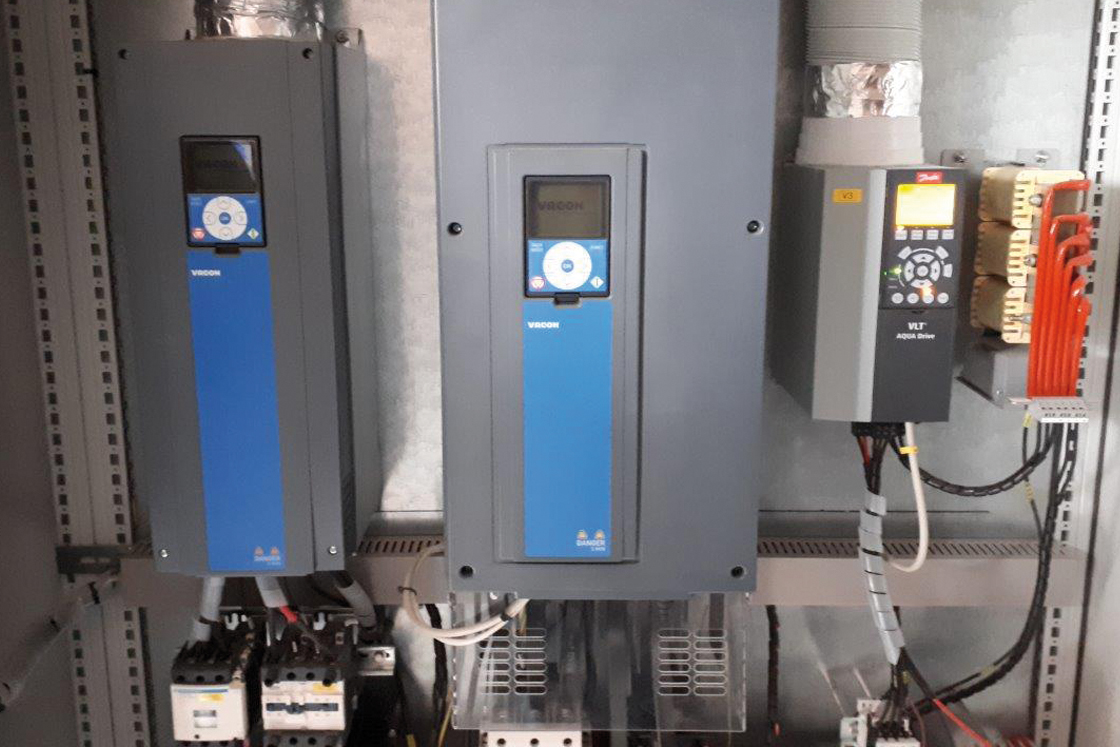
From grid-powered to solar-powered
The original irrigation system used four submersible pumps, which supplied a 49,000 m3 water basin, and two vertical shaft pumps, which supplied tank water to the irrigation system.
In order to reduce the electricity consumption from the grid, Sumsol designed a 300 kWp solar pump system with automatic power grid backup. The arrangement consists of 944 modules of 320 Wp, a structure with horizontal axis tracking and a Sumsol pumping system integrated into the same cabinet - all completely automated. The pumping system is controlled with five solar-powered VACON® 100 INDUSTRIAL drives, backed up by a grid-powered VACON® 100 FLOW drive operating a jockey pump for night.
The drives connected to the solar panels use the solar pump application with MPPT4 algorithm, which optimizes the production of energy, and avoids oversizing the solar field.
“It was the first system installed in Spain with these characteristics”, noted David Manso, Director of Sumsol’s Technical Department.
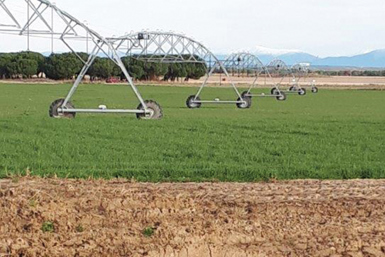
35% increase in yield
Thanks to four parallel operating algorithms, the set value is continuously monitored and controlled, which ensures the extraction of the maximum power available for the environmental conditions. In this way an increase in yield of 35% is achieved, which translates into more water pumped and more operating time.
The drive adjusts the consumption of the pumps to the real needs of the customer, reducing the demand for energy by the system. About 478 MWh less energy is consumed from the network annually, delivering 52 TEUR/year financial savings.
Learn about the products
-
if (isSmallPicture) {


 VLT® AQUA Drive FC 202
VLT® AQUA Drive FC 202VLT® AQUA Drive FC 202 controls all types of pumps and comes equipped with a cascade controller.
-
if (isSmallPicture) {


 VACON® 100 INDUSTRIAL
VACON® 100 INDUSTRIALDrive modules and enclosed drives that are easily integrated into all major control systems.
-
if (isSmallPicture) {


 VACON® 100 FLOW
VACON® 100 FLOWDedicated functionality that improves flow control and saves energy in industrial pump and fan applications.
Learn about solutions for irrigation
-
if (isSmallPicture) {


 Irrigation
IrrigationEfficient and sustainable irrigation is vital for the global security of food supply. Danfoss offers solutions to reduce energy consumption, increase water efficiency and protect infrastructure.
Related case study
-
if (isSmallPicture) {


 How did Sincrondraiv SRL improve irrigation pumping efficiency by up to 40%?
How did Sincrondraiv SRL improve irrigation pumping efficiency by up to 40%?ROMANIA: Digitizing irrigation systems helps farmers achieve better harvests. Pumping stations now use 30-40% less energy and use water more efficiently too.
-
if (isSmallPicture) {


 Bringing clean drinking water to rural Kenya with 100% renewable resources
Bringing clean drinking water to rural Kenya with 100% renewable resourcesKENYA: A solar-powered desalination plant in Kenya gives the community affordable, clean, and sustainable drinking water and irrigation water.
-
if (isSmallPicture) {


 Danfoss efficiencies help South African farmer to free up energy and achieve production goals
Danfoss efficiencies help South African farmer to free up energy and achieve production goalsSOUTH AFRICA: Discover how a South African farmer achieves 155,000+ kWh in annual energy savings thanks to a collaboration between Danfoss and BMG.
-
if (isSmallPicture) {


 Solar irrigation pump lowers emissions and saves energy
Solar irrigation pump lowers emissions and saves energySPAIN: Sumsol achieved significant energy savings and emission reduction by converting grid-powered pumps to solar power, optimized by VACON® 100 drives.
-
if (isSmallPicture) {


 Optimal irrigation for Jurex srl
Optimal irrigation for Jurex srlBy using VLT® AQUA Drives to control irrigation pumps, it is possible to adapt the pressure and flow in the system to the current demand. This results in significant energy savings.

